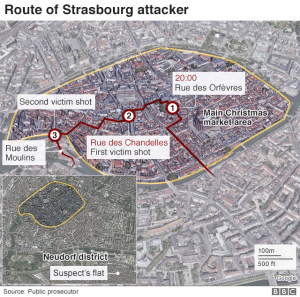
KKK recruitment propaganda. Source: Link
Upstate New York experienced a unique threat to the safety of their community this year: attempted Ku Klux Klan (KKK) recruitment of their school children. Specifically, the United Northern & Southern Knights of the KKK, two specific sects of the Klan, printed propaganda and placed it into bags accompanying candy. These bags were then placed onto driveways of school children in the early morning hours in an effort to ensure that the children got the packages while exiting their homes for school.
Oneida County Sheriff Robert Maciol was careful to note that the recruitment effort was a form of protected free speech; however, any attempt to solicit acts of violence would be prosecuted. Upstate New York is not alone in experiencing Klan activity, despite the fact that many perceive the KKK as essentially defunct. As of 2017, 42 known Klan groups were active across almost two dozen states. Current estimates place the number of Klan members, or those sympathetic or open to their ideology, at around 3,000 people. However, blanket recruitment efforts such as those used in upstate New York are distinctly unsophisticated and rely on chance, because the propaganda will only work if it lands in the hands of a child vulnerable to the beliefs presented.
Interestingly, many members of the modern Klan have a mixed ideology of traditional Klan beliefs and neo-Nazi beliefs. In some cases, these mixed ideologies can weaken extremist groups as it makes their members’ loyalties much more complicated.
However, Ken Parker, a former leader in the Ku Klux Klan, is an example proving that full-fledged members of the Klan can change their ideological loyalties. Parker was recruited into the Klan after spending 11 years in the United States Navy, leaving the service during a terrible economic downturn. Parker was first driven to contact a local chapter of the Klan by programs on Netflix that looked at the history of the Klan and neo-Nazism. At first, according to Parker, he was uncomfortable with the anti-Semitic rhetoric of his newfound friends; even so, he fully radicalized within 6 months. Though he met his fiancée at a cross burning, Klansmen close to Parker disapproved of the relationship, leading Parker to renounce his position in the Klan and commit to being a neo-Nazi. After some time with the neo-Nazi National Socialist Movement, Parker became friends with a Muslim filmmaker and renounced neo-Nazism altogether. Parker now spends his social time as an active member of a local church group.
What does Parker’s case tell us about those vulnerable to recruitment by the Ku Klux Klan and other white supremacist groups? Their belief system is not as strong, nor is it as deeply rooted as other extremist ideologies. The identity associated with being a Klansman has perhaps become diluted, making for weaker loyalties. If Parker’s case is representative of even a moderate percentage of Klan recruitment, then the Klan is relying on recruiting individuals who are susceptible to recruitment from a wide variety of groups. Many of these individuals are high-risk to be recruited by a wide variety of organizations, whether they be extremist groups, cults, or street gangs. These high-risk individuals often are looking to belong, to be meaningful members of a group, and to find an ideology which explains their real or perceived problems. While this may be seen as beneficial for the Klan, in reality it fails to produce long-term members for the group.
Lack of sophisticated recruitment capability likely is representative of a disorganized organization. While it is repulsive to experience Klan recruitment efforts at all, attempts like the candy drive in upstate New York are an indicator that the Klan is not in a position of returning to the strength it once held. Local law enforcement should monitor such cases to look for solicitation of specific acts of violence or changes in sophistication of targeted recruitment efforts. A change in recruitment operations for the Klan likely will signal a change in the organization, towards a more decentralized structure or to a more rigid structure depending upon the direction the Klan attempts to take going forward.
John Patrick Wilson is a Law Enforcement Professional and a Research Fellow with Rise to Peace.









